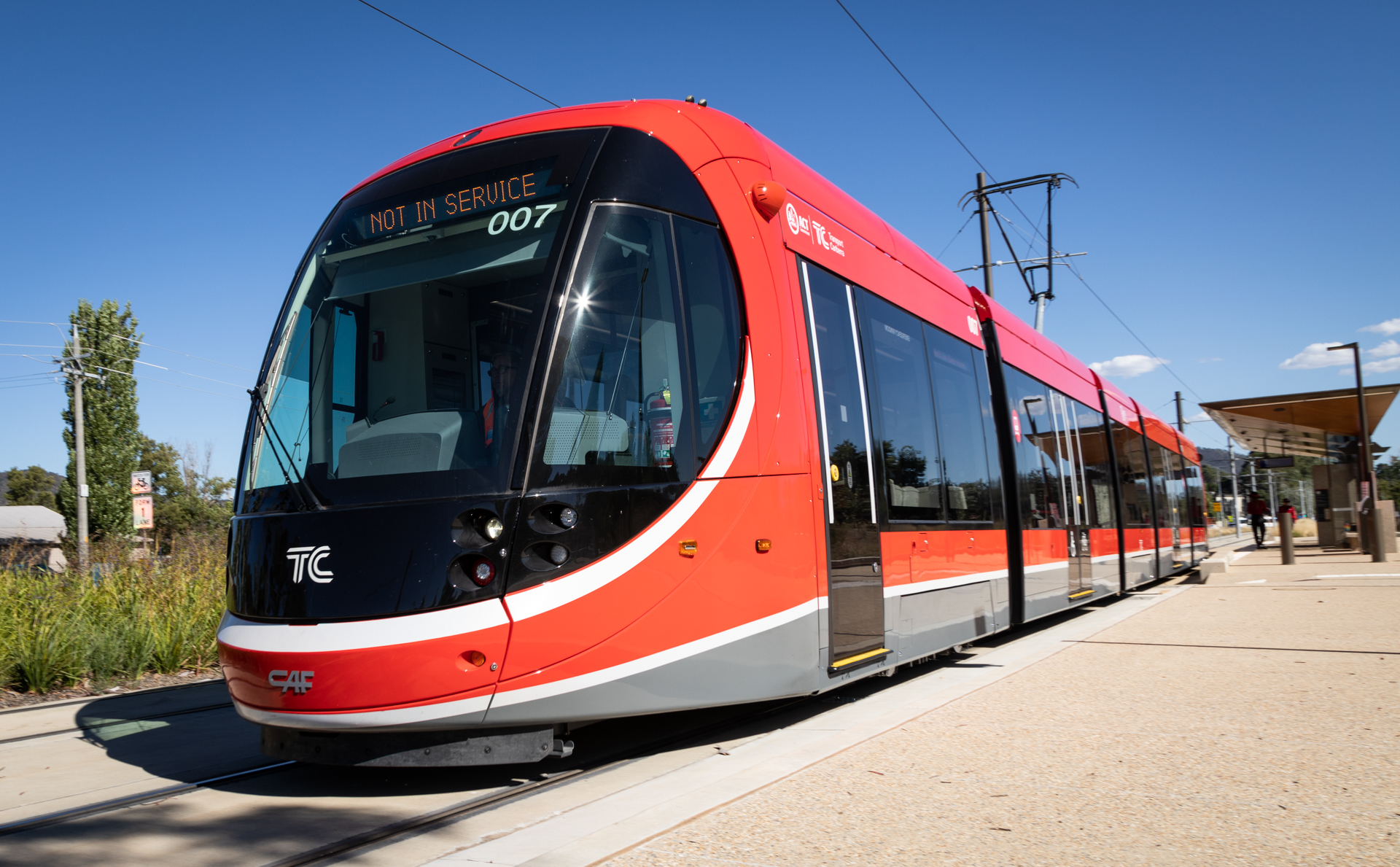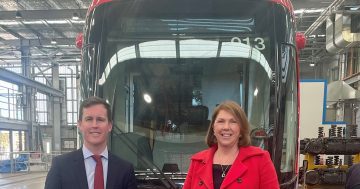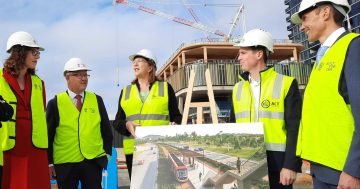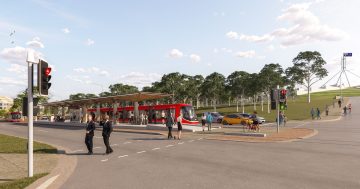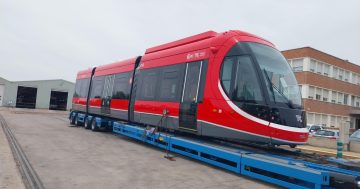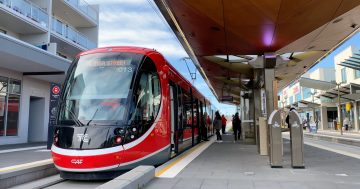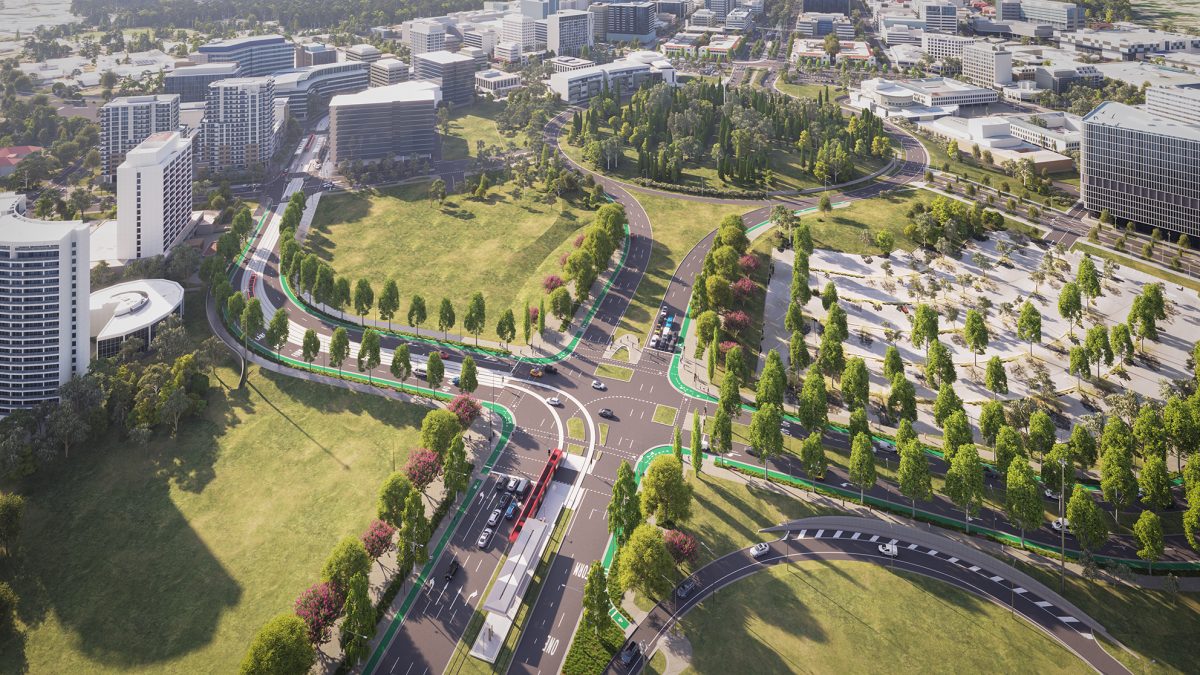
Light rail stage 2A has been approved, but finding out more about what stage 2B will entail is still a long way off. Photo: Artist’s impression, ACT Government.
The ACT Government has been given another push to get on with releasing the business cases for light rail stage 2B and beyond.
Among the 123 recommendations from the select committee inquiry into the 2023-24 ACT Budget, two related to light rail. One called on the government to release the preliminary business case for stage 2B “as soon as practicable” and the other suggested future budget papers should contain a “dedicated overview” of all budget aspects of stages 2A and 2B, as well as associated projects.
“This would include indicators on construction progress, budget and forward estimates’ expenditure provisions and projections, and estimated completion dates for budgeted activities and procurements,” the report stated.
This comes after a Canberra Liberals’ motion in June calling for the cost-benefit assessment of light rail stage 2B to be released, which was shot down as being a “radical disregard” for proper process.
When questioned about the recommendations, Transport and City Services Minister Chris Steel said the complexity of the project meant the business case was still not in a form where it could be released.
He explained the government needed the initial design of stage 2B to go through planning approvals, which were “required” to fully understand the scope of the project.
Only then could a business case be developed.
“This is a major complex infrastructure project, the largest in Canberra’s history, and it is going to be a different pathway to previous projects,” Mr Steel said.
“We need to undertake that level of design and planning approvals before we actually go through the development of a full business case, because if you don’t know the scope of the project, you can’t then cost the projects and you can’t then understand the full benefits of the project.”
The government previously stated it would release the business case publicly once both the design work had been completed and the relevant planning approvals had taken place.
Mr Steel said this would reduce “planning risk”, as the project would also be influenced by the National Capital Authority.
“We know that the Houses of Parliament will want to have their say, potentially through a joint parliamentary committee inquiry where they may make recommendations,” he said.
“We don’t want to go back to square one on the project by releasing a business case now and then having to completely redo a business case in the future if there are changes to the route.”
Mr Steel had told the committee hearings that business cases weren’t “typically” published, and were usually completed years before the procurement process.
However stage 2B had unique challenges.
“The level of risk is so high, because we literally have to go through four different planning processes, we need to understand what the scope of the project is and if there are any changes that need to be made to the route and an alignment of light rail stage 2B,” Mr Steel said.
“We need to consider what the options are in the business case and we need to go through this process first … that will enable the government to make better decisions about what we do and how we deliver stage 2B.”
Light rail stage 2B design and approvals have been costed at $27,750 for 2023-24 and $22,250 for 2024-25.
Changes potentially could be made to the light rail’s route due to heritage, cultural and environmental values in the National Capital Area.
An environmental impact statement will be drafted over the next 18 months to assess potential impacts to these values, as well as to traffic and transport, biodiversity and socioeconomic impacts.
Crossing Lake Burley Griffin at Commonwealth Avenue Bridge is still subject to planning and design approvals, as well as timeframes of third parties.
Despite these challenges, Mr Steel said the government stood by its commitment to get light rail to Woden by 2030.
“The government has consistently said that stage 2B is more complex because it moves through the National Capital Area and is subject to more complex planning approvals,” he said.
“We expect stage 2B to be delivered this decade … we are determined to work milestone by milestone to bring light rail to Woden.”
Procurement for Stage 2A should be completed by the end of the year.*
*Clarification: A previous version of this story may have implied that procurement for Stage 2B would be completed by the end of the year by referring to the next stage of the project.












